Effective Hair Trimmer Machines for Split Ends
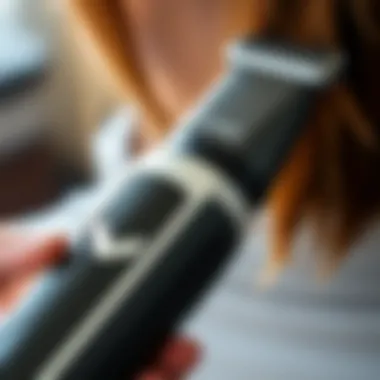
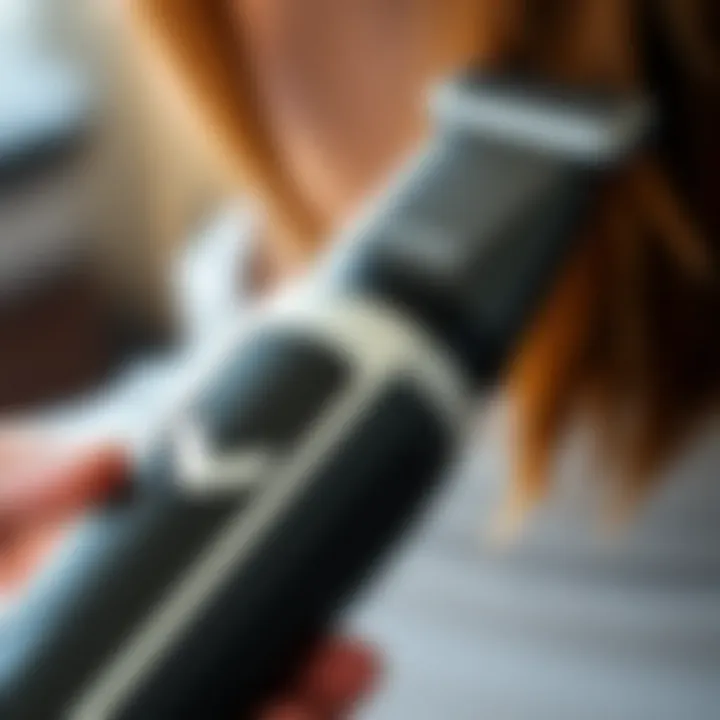
Intro
Split ends are a common hair concern, causing frustration for many individuals striving for healthy locks. The advent of specialized hair trimmer machines has transformed the landscape of hair care, providing efficient solutions to tackle this issue. As we delve deeper into the realm of hair trimmer machines aimed explicitly at combating split ends, it becomes clear that understanding their technology, functionality, and how best to use them can significantly enhance the health and appearance of one's hair.
In this discussion, we will dissect the latest innovations in hair trimming devices and the expert opinions advocating their usage. Additionally, we'll highlight key factors to ensure a wise purchase decision, including maintenance tips necessary for optimal performance of these machines. By exploring various brands and models, we aim to equip readers with the insights needed to maintain their hair effectively while managing split ends.
Whether you're a stylist looking for the right tools, a designer interested in hair trends, or simply a student eager to learn about effective hair care, this guide is tailored for anyone keen on enhancing their understanding of how to preserve the beauty and vitality of hair.
Understanding Split Ends
Split ends are a common concern for anyone who values hair health, and understanding them is crucial for proper hair care. When hair strands fray at the ends, they can lead to a cascade of issues, including breakage, tangling, and an overall unkempt appearance. Thus, this article provides a comprehensive look into split ends, giving readers a chance to grasp the intricacies involved in their origin, management, and the tools available for prevention. Recognizing what split ends are and their impact on hair health can empower individuals to make informed choices about their hair care routines.
What Are Split Ends?
Split ends, known in the professional world as "trichoptilosis," occur when the protective outer layer of a hair strand wears away. This fraying splits the hair into two or more strands, leading to an unsightly appearance. Split ends can form for a variety of reasons, and they affect all hair types. Characteristically, they manifest more prominently in dry or damaged hair, often resembling tiny feathers at the ends of the strands. Although split ends can't be repaired, they can be managed effectively with the right tools and techniques.
Causes of Split Ends
Understanding the root causes of split ends is imperative when devising a strategy for prevention and management. Various factors contribute to this hair issue, and they are often intertwined. Below are some significant causes:
Environmental Factors
Environmental elements profoundly influence the health of our hair. Factors like sun exposure, humidity, and pollution can lead to dry, brittle hair that is prone to splitting. UV rays can degrade the hair's protein structure over time, leading to increased dryness and loss of elasticity. Additionally, extreme temperatures—whether hot or cold—can worsen the condition, stripping moisture away. To protect hair from these environmental aggressors, one might consider using protective hairstyles or hair sprays that include UV filters.
Chemical Treatments
Chemical processes, including dyeing or perming, are immensely popular for altering hair's color and texture but can cause substantial damage. Each application alters the hair's natural structure, potentially leading to weakened strands. Specifically, harsh chemicals strip away natural oils and moisture, leaving behind hair that's vulnerable to breakage and split ends. Choosing high-quality products or seeking professional help can help mitigate these effects, making awareness of ingredients essential in any hair treatment.
Mechanical Damage
In many everyday scenarios, we may inadvertently inflict damage on our hair through mechanical means. Excessive brushing, towel drying, or improper heat styling can create friction that leads to split ends. For example, using a standard bath towel to wring out wet hair may cause more fraying than using a microfiber one designed to be gentle on strands. Understanding these mechanical stresses is vital for hair maintenance. Adopting gentle handling techniques can significantly reduce the risk of mechanical damage and subsequent split ends.
Impact on Hair Health
The presence of split ends affects not just the aesthetic quality of hair, but also its overall health. When the ends are damaged, they can weaken the entire strand, leading to systemic breakage higher up the hair shaft. This cascading effect creates a cycle of hair damage that can seem daunting. It underscores the importance of promptly managing split ends to preserve hair health. By addressing these issues head-on—be it through the use of specialized hair trimmer machines or adopting more mindful hair care practices—individuals can pave the way for healthier, more resilient hair.
"Prevention is always better than cure." Suffering from split ends can be avoided through education and proper care.
By grasping the fundamental aspects of split ends, readers can better appreciate the subsequent sections that discuss the role of hair trimers in managing this prevalent hair ailment.
The Role of Hair Trimmer Machines
When it comes to managing split ends, understanding the role of hair trimmer machines is crucial. These devices have transformed hair care by offering a straightforward, efficient way to maintain healthy locks. The introduction of hair trimmers has not only simplified the process of trimming but also provided new solutions tailored specifically for split ends. Let's take a closer look at how these machines can benefit your hair care routine.
What Is a Hair Trimmer Machine?
A hair trimmer machine is an electric or battery-operated device designed for cutting hair. It typically features sharp blades that move rapidly to trim hair at a precise length. Unlike traditional scissors, which require a steady hand and considerable skill, hair trimmers are more forgiving and accessible to users at all skill levels. This makes them an essential tool in every stylist's arsenal, especially when tackling troublesome split ends.
Differences Between Hair Trimmers and Scissors
While both tools aim to help maintain hair health, their methodologies differ significantly. To illustrate, consider the following aspects:
Precision Cutting
Precision cutting involves a careful approach where the hair's end is treated with attention to detail. Hair trimmers can achieve this with less effort than scissors. Their design allows for uniform trimming across various hair types and lengths. This reliability is a key factor for someone aiming to reduce split ends effectively.
- Key Characteristic: The blades in trimmer machines are engineered for fine precision.
- Advantage: They reduce the risk of uneven ends, ensuring a cleaner look.
- Example: A trimmer can smooth out hair without snagging, which is common with scissors if not used correctly.
Ease of Use
Hair trimmer machines are generally easier to maneuver than scissors, especially for those who lack professional training. Their lightweight design and ergonomic grip allow users to trim their hair comfortably and accurately.
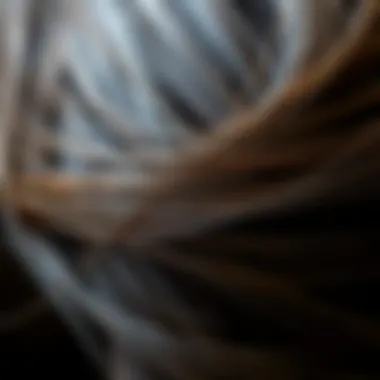

- Ease of Use: Hair trimmers can often be handled one-handed, freeing the other hand for styling or sectioning.
- Advantage: Less complicated than traditional tools, they can be a go-to for quick touch-ups.
- Unique Feature: Many models come with adjustable settings, which permits users to select the desired length without having to change tools.
Heat Management
Heat management is essential for preserving hair health during trimming, particularly for those with chemically treated hair. Overheating can make split ends worse and damage the hair further.
- Key Characteristic: Some hair trimmers are designed with heat dissipation features to keep blades cool.
- Advantage: This minimizes the risk of thermal damage, ensuring a safer trimming experience.
- Example: Trimmers equipped with cooling technology can run longer without overheating, making them ideal for professional use during busy salon hours.
In summary, hair trimmer machines offer precise cutting, ease of use, and effective heat management, making them a preferred choice for many individuals looking to combat split ends.
Benefits of Using Hair Trimmer Machines for Split Ends
Hair trimmer machines have become a game changer in the quest for flawless hair. When it comes to dealing with split ends, these machines offer practical solutions that can make a world of difference. Understanding the benefits of using hair trimmer machines is essential for anyone who wants to maintain healthy hair while addressing the pesky issue of split ends. Each advantage propels haircare into a more efficient realm, creating a hair routine that’s not just effective but also enjoyable.
Efficiency in Maintenance
Utilizing hair trimmer machines brings significant efficiency into hair maintenance. Unlike traditional scissors, trimmers can tackle split ends swiftly, ensuring that upkeep takes less time without sacrificing hairstyles. This efficiency is especially important for individuals with busy lifestyles who may not have the luxury for lengthy salon visits. A hair trimmer machine operates with precision, allowing users to remove split ends at home, effectively leading to less hair breakage and healthier locks overall.
By incorporating these machines into your regular haircare routine, you save both time and money. No more hurrying to book appointments or waiting at a salon. Just a quick pass through your hair can keep split ends at bay, preventing the need for more drastic measures further down the line.
Rejuvenating Hair Appearance
Regular trimming with a hair trimmer machine not only addresses split ends but also helps rejuvenate the overall appearance of your hair. The result is often a radiant, bouncy texture that looks as vibrant as it feels. Split ends can give hair a frayed impression, leading to the perception of dullness; however, trimming them away instantly revitalizes the look, making hair appear thicker and healthier.
A machine effectively removes the uneven lengths caused by those pesky split ends, resulting in a polished finish. This is not just about aesthetics; a fresh cut can even enhance your hairstyle. Whether you're rocking loose waves or a sleek bob, a well-trimmed base is key to showcasing any style beautifully. It’s baffling how much of a difference a clean trim can have on your self-esteem.
User-Friendly Features
Adjustable Settings
One standout aspect of hair trimmer machines is their adjustable settings. This feature allows users to customize their trimming experience based on hair type and desired length. Tailoring the blade's speed or cutting grade can greatly enhance trimming effectiveness while reducing the risk of damage. For instance, if you're dealing with fine hair, a gentler speed can help minimize friction, thus preventing further splitting.
The key characteristic that makes adjustable settings a favorite is how they cater to individual needs. A range of options ensures that almost everyone can find the right setting for their hair. A unique benefit of having various settings is the versatility it offers, adapting to both coarse and fine textures, changing as your hair grows or as your styling preferences evolve. The ability to make on-the-fly adjustments is essential in today’s fast-moving world.
Compact Design
Another compelling feature is the compact design of many hair trimmer machines. These smaller, lighter devices deliver power without the burden of bulkiness, providing an advantage for those who travel or just have limited storage. The compactness also means that handling is easier, especially for long session trims, which can be overwhelming if the equipment is unwieldy.
Moreover, the unique feature of a compact design is that it often integrates additional functionalities without excess weight. For example, some models may include built-in combs or guide lengths all in one handy package. While being compact has many advantages, it can sometimes mean sacrificing battery life or motor strength; therefore, it’s wise to consider how often you may need a charge when in a hurry.
Choosing the Right Hair Trimmer Machine
Selecting a hair trimmer machine specifically for managing split ends can be a real game-changer in your hair care routine. The right device not only saves time but also aids in effectively treating those pesky split ends without compromising the overall health of your hair. Understanding different features helps in making an informed choice tailored to your specific needs.
Key Features to Look For
Blade Quality
When it comes to blade quality, what you want is something that can make a clean cut without causing more damage. High-quality blades are often made from stainless steel or ceramic, both of which offer durability and sharpness. A key characteristic of these materials is their ability to retain sharpness longer, which is essential when trimming split ends.
Using a trimmer with dull blades tends to be less effective, leading to more split ends later on, which defeats the purpose. Moreover, ceramic blades tend to stay cooler during use, minimizing the risk of overheating and further damaging your hair.
Battery Life
Battery life is another crucial aspect that shouldn't be overlooked. A long-lasting battery means you won't be caught off guard mid-way through a trim, which can be frustrating. Many high-quality trimmers boast features like lithium-ion batteries that not only charge faster but also hold their charge longer. If you're someone who often travels or prefers cordless options, investing in a trimmer with robust battery life can make a world of difference. However, you also need to consider how often you’ll need to recharge it, as some devices require longer charge times than others.
Weight and Ergonomics
Weight and ergonomics play a significant role in how easy it is to handle the trimmer. A lightweight design can be a real advantage, especially during longer grooming sessions. Look for machines that balance weight well and fit comfortably in your hand. This prevents fatigue and allows for better control while trimming. Ergonomically designed handles can also offer a better grip, reducing the chance of slipping, which is vital for achieving an even trim. According to many users, a well-designed trimmer can enhance the overall experience, making it feel less like a chore and more like a part of self-care.
Brand Recommendations
When choosing the right hair trimmer, the market is brimming with options. Some brands have carved a niche with their high-quality products. For instance, Wahl and Andis are reputable brands recognized for their excellent performance and reliable customer service. Meanwhile, Remington offers budget-friendly options without skimping on quality. Additionally, you might want to consider brands like Philips that are known for innovation in battery technology, and Panasonic, which has a great reputation for ergonomic designs. Each of these brands provides unique features that cater to different needs, whether you're looking for consumer-friendly or professional-grade tools.
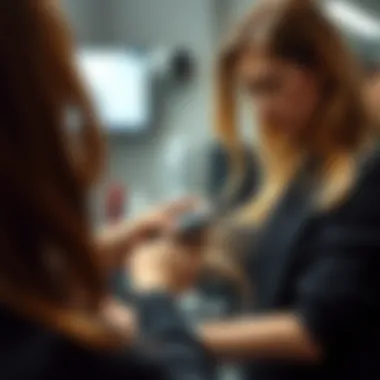
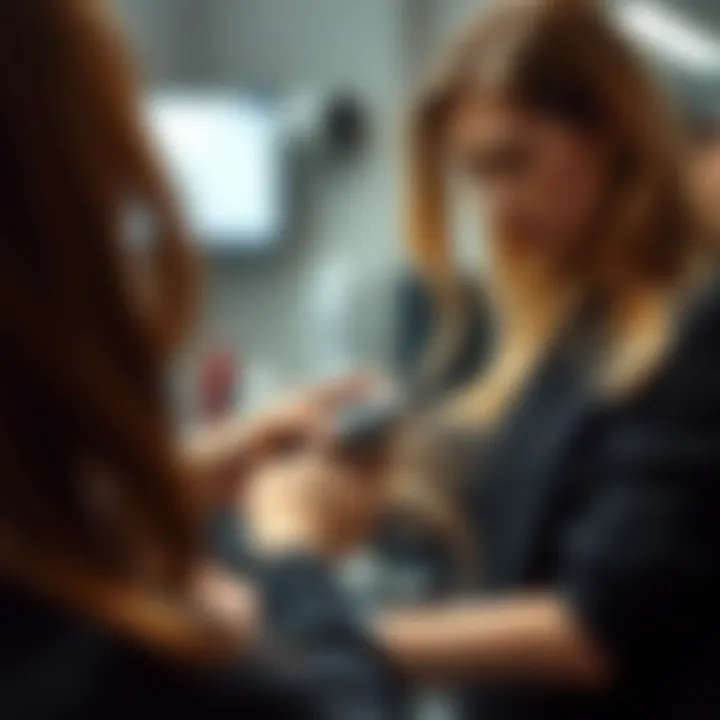
How to Use Hair Trimmer Machines Effectively
Using hair trimmer machines effectively is crucial for anyone looking to manage split ends while maintaining overall hair health. Doing so not only promotes hair vitality but can also save users from the hassle of frequent trips to the salon. Proper usage techniques can make a significant difference in outcomes and longevity of the hair. This section will delve into the essential steps to achieve the best results using these specialized machines, enlightening users on preparation, technique, and post-care considerations.
Preparing Your Hair
Before firing up the trimmer, it's not just a good idea but a must to prepare your hair adequately. Proper preparation helps in achieving a smooth trimming experience, making it a whole lot easier.
Detangling Techniques
First things first, detangling your hair is crucial. Hair that’s tangled can result in uneven cuts or even damage due to pulling. A simple yet effective tool for this job is a wide-toothed comb. It glides through knots without causing too much friction or breakage, which can be a common issue with finer-toothed combs. When detangling, work from the ends upward, which prevents stress on the hair roots.
- Advantages:
- Minimizes breakage due to pulling.
- Allows for a smoother trimming process.
The important characteristic here is patience. Taking your time ensures no tangled sections are left behind; this is where a lot of people see error. Always detangle your hair dry; wet hair can be deceptive in terms of how tangly it actually is.
Sectioning
Sectioning is another vital step to ensure that the trimming process is both organized and effective. By dividing your hair into smaller parts, you can easily focus on one section at a time, ensuring comprehensive coverage without missing any spots.
- Advantages:
- Allows for precision in trimming.
- Reduces the chances of over-trimming; users can gauge how much they cut better.
This technique is a favorite among stylists as it provides clarity and control. A popular method is to use hair clips to keep sections in place. Make sure the sections are not too thick, as this may hinder the effectiveness of the trimmer.
Techniques for Use
Once your hair is prepped, it’s all about executing the trim with precision and care.
Angle and Movement
When using a hair trimmer machine, angle and movement play a pivotal role. The angle at which you hold the machine can directly influence the quality of the cut. For instance, holding the trimmer at about a 45-degree angle often results in a cleaner finish. This technique allows the blades to glide through the hair rather than yank at it.
- Advantages:
- Reduces the risk of split ends forming immediately after trimming.
- Promotes an even cut across all sections.
Being mindful of movement is equally important. Slow, deliberate strokes can lead to a more uniform result compared to rushed, hasty movements that may miss spots or create jagged lines.
Speed Control
Many modern trimmer machines come equipped with speed control settings. This feature can significantly enhance your trimming experience. Higher speed settings are beneficial for coarse hair, while a lower speed can reduce stress on fine or fragile strands.
- Advantages:
- Provides versatility for different hair types.
- Can reduce the likelihood of heat damage due to prolonged exposure.
Users should experiment with different speeds to find what works best for their hair type. Ultimately, this small adjustment can lead to much better results without compromising hair health.
Maintaining care in both technique and choice of speed is essential for effective trimming and preventing split ends from reforming.
Post-Use Care and Maintenance
Caring for your hair trimmer machine is a necessity, not just a suggestion. Neglecting post-use care can lead to subpar performance, compromising the job of smoothening out split ends. By taking a moment to properly maintain your device, you enhance its longevity and efficiency. This section highlights key maintenance steps that not only keep your trimmer in great shape but also contribute to optimal hair health.
Cleaning Your Hair Trimmer
Removing Hair Build-Up
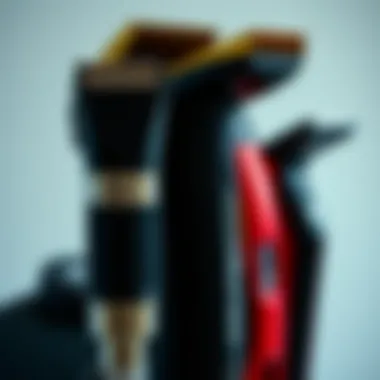
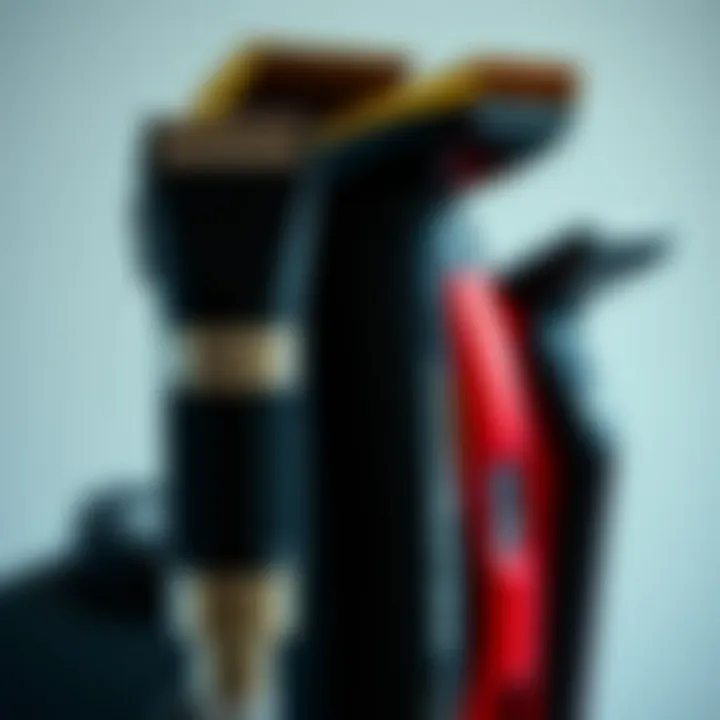
One of the most crucial aspects of maintaining a hair trimmer is ensuring that it is free of hair build-up. When hair accumulates on the blades and inside the device, it can cause the trimmer to work harder, resulting in inefficient cutting. This not only hinders performance but can also lead to overheating. An essential characteristic of keeping your trimmer clean is that it directly correlates with smoother operation and fewer split ends in the long run.
Many users find that a simple brush or a can of compressed air can assist in lifting out hair strands effectively. Neglecting hair build-up might lead to more significant issues like damage to the blades or reduced battery life. Regular cleaning, ideally after each use, ensures the trimmer operates optimally and helps preserve the quality of your hair.
Sanitizing Blades
Sanitizing blades is equally important. After cleaning off hair debris, it's crucial to ensure the blades are free of germs and bacteria. To achieve this, solutions like alcohol wipes or specialized sanitizing sprays are popular choices. The key characteristic of sanitizing blades is that it minimizes the risk of scalp infections and keeps your trimming experience hygienic.
An effective sanitizing procedure can be a game changer, especially if you're using trimmers on multiple clients or have a plethora of product engagements. However, while sanitizing is of utmost importance, it's advisable to refrain from using overly abrasive substances that can damage the blades over time. Incorporating this step into your routine will help maintain sharpness, efficacy, and above all - hygiene.
Storage Considerations
When it comes to stashing your hair trimmer, the right storage can extend its life significantly. Not keeping the trimmer in a proper, dust-free place can be comparable to letting it stay on a rainy day with no umbrella. Ideally, the storage spot should be dry and clean. Tight cases or pouches guard against dust while providing additional safety from physical damage. It's best to avoid areas that can be too humid, such as bathrooms.
- Keep the trimmer in a hard case if possible.
- Avoid bending power cords when storing.
- Store it away from direct sunlight which can warp plastic components.
Taking these steps will help keep your hair trimmer machine primed for its next use, ultimately minimizing split ends and maintaining the health of your hair.
Common Mistakes to Avoid
When it comes to using hair trimmer machines for managing split ends, it's crucial to avoid certain common pitfalls that could hinder hair health even further. Understanding these mistakes not only enhances overall hair care but can also enhance the longevity and performance of the trimmer itself. Let's explore the areas where many falter and how sidestepping these errors can lead to better outcomes in hair management.
Over-Trimming
One of the most prevalent mistakes users make is over-trimming the hair while trying to eliminate split ends. It may feel tempting to cut more than intended, especially when facing persistent split ends. However, excessive trimming can strip essential length, leading to an uneven look and increased styling time. What might begin as a desire to freshen up the ends can lead instead to a compromised hair structure.
For effective trimming, adhere to a method where you only cut the minimal split ends necessary. This practice helps maintain the desired length while still enabling healthy hair growth. Additionally, consider employing the following strategies to avoid over-trimming:
- Begin with a Small Section: Start cutting in small sections to gauge the amount of hair to be removed.
- Use a Mirror: A good mirror angle allows you to see split ends without the risk of taking off too much.
- Set Achievable Goals: Aim to trim no more than the required amount, focusing on split ends.
It is essential not to lose sight of the overall look you want to achieve. Cutting just the right amount makes a world of difference.
Ignoring Maintenance
Another significant mistake occurs when users ignore maintenance of their hair trimmer machines. Just like any tool, these devices need regular care to perform well. Neglecting this aspect can lead to diminished efficiency, less precise cutting, and potentially even damage to your hair.
Proper maintenance includes:
- Regular Cleaning: After each use, remove hair buildup from the blades and casing, which prevents overheating and ensures longevity.
- Blade Care: Keeping the blades sharp is vital. Dull blades can tug at strands instead of cutting neatly, which can contribute to further splitting.
- Check Battery Health: If you have a cordless model, periodically check battery performance to ensure it delivers optimal power.
Ignoring these maintenance tasks can ultimately result in a trimmer that underperforms and causes chaos instead of smoothing out split ends. By fostering a routine of care, users not only enhance their device’s lifespan but also ensure their hair remains healthy and under control.
Remember, a little effort in maintenance today leads to better results tomorrow.
The Future of Hair Care Technology
Understanding the future of hair care technology is essential as it directly influences how consumers address their hair concerns, especially when it comes to split ends. In a world where innovation continues to unfold at a rapid pace, hair care tools are evolving, making it easier for individuals to maintain their hair health at home. Incorporating advanced techniques can enhance efficiency and effectiveness in hair management, while also offering personalized solutions based on user needs.
Innovations in Hair Trimming
Smart Devices
Smart devices are the cutting-edge of innovation in hair care, making the task of trimming hair not just a chore, but a tailored experience. One remarkable characteristic of these gadgets is their ability to connect to the Internet, allowing them to integrate with apps that provide personalized styling advice. For instance, a smart hair trimmer may come with features like sensors that assess hair texture and thickness, adjusting the trimming speed accordingly. This ensures that users achieve optimal results without inflicting harm to their hair.
The unique feature of smart devices is their capacity to offer real-time feedback and guidance. Users can receive prompts about when to change the blades or how to adjust settings based on their hair condition. However, one downside could be the learning curve associated with technology – not everyone is tech-savvy. That said, for those who embrace smart technology, these devices can significantly streamline their hair grooming routine, reducing time and effort while enhancing precision.
AI Integration
AI integration represents another monumental leap in hair care tools. This technology enables devices to learn from previous user interactions, effectively customizing their performance. For example, an AI-enabled hair trimmer could recognize patterns in how often you trim your hair or the specific styles you prefer, adapting its functions to better suit your habits.
A very appealing aspect of AI integration is its predictive capabilities. With this tech, users can receive alerts when their hair health shows signs of deteriorating, suggesting timely interventions before split ends flare up. The unique characteristic of AI is its ability to process large amounts of data to optimize the user experience continually. While this offers considerable advantages, like personalized haircare based on individual data, it does raise concerns about privacy and data security. Nonetheless, the potential benefits of more efficient trimming tailored to the unique needs of users are undeniable.
Sustainability in Hair Tools
As consumers become more conscious about their environmental impact, sustainability is becoming a focal point in the design and production of hair care tools. Many brands are now focusing on producing tools that employ eco-friendly materials and energy-efficient mechanisms. For instance, there are hair trimmers made with biodegradable plastics and recyclable parts, ensuring minimal waste after their life cycle.
Additionally, some manufacturers are adopting sustainable practices in their supply chains, ensuring that their products are not only effective but also released into the market in an environmentally friendly manner.
Supporting sustainability in hair care technology represents a shift towards responsibility, where every purchase reflects a commitment to more ethical consumer behavior. This not only attracts eco-conscious consumers but also positions brands favorably in a market increasingly driven by values and ethics.















